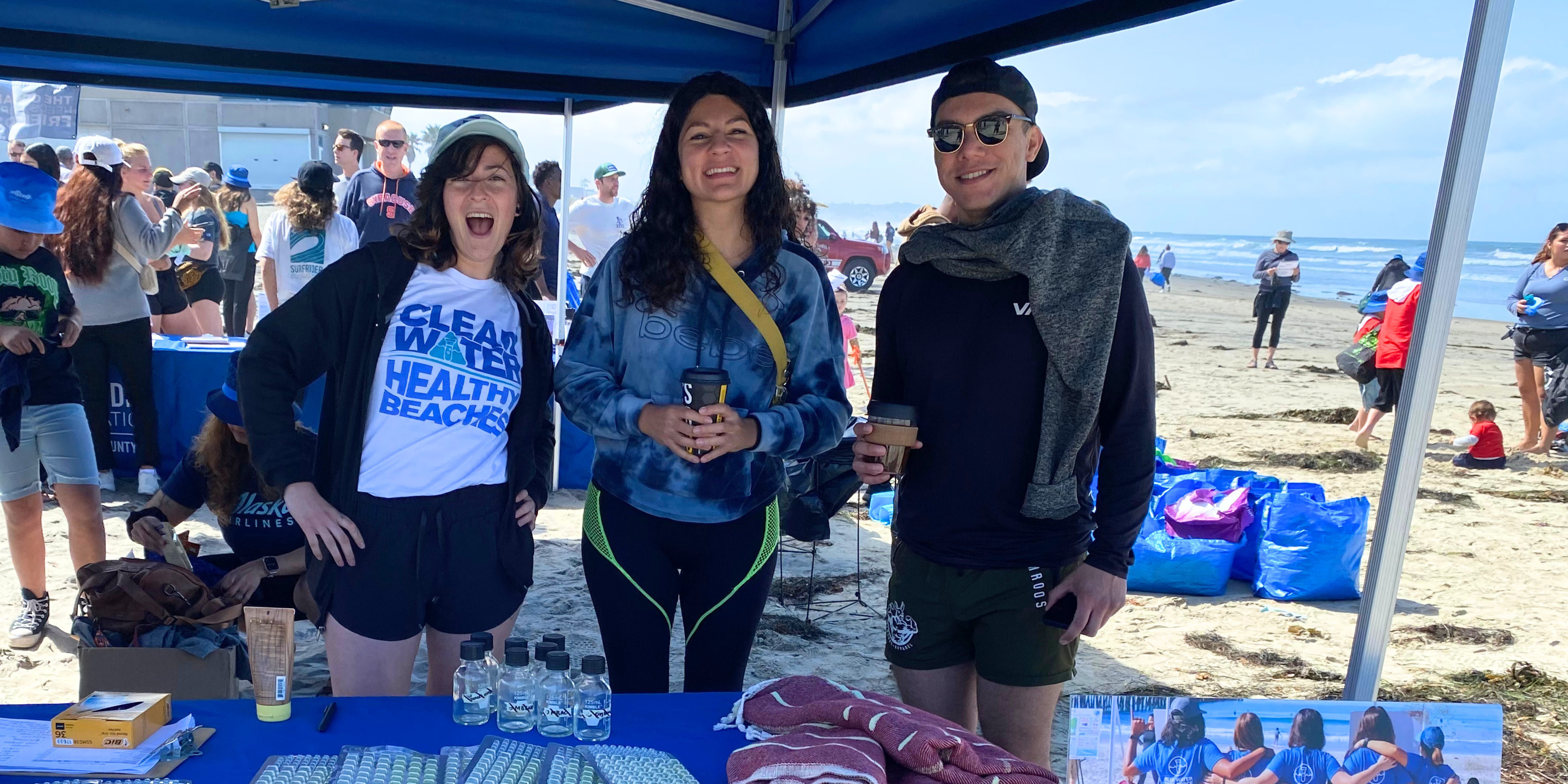
Looking back on 2024, the San Diego Blue Water Task Force (BWTF) is excited to share our findings from the past year. Our program monitors Enterococcus (fecal indicator bacteria) abundance at public beaches in San Diego County on a weekly basis. This is important work as high levels of fecal bacteria pose a threat to public health and safety and can be damaging to marine ecosystems.
Over the past year, the San Diego BWTF added four sites to its roster, bumping up the total number of sites from 13 to 17. The new sites are Tamarack Surf Beach, South Ponto Beach, Hotel del Coronado (Avenida del Sol), and Silver Strand State Beach. The map above highlights these locations, with the original 13 sites shown as grey points and four new sites as green points. Parentheses on the map indicate the last time these sites were sampled by BWTF.
Looking at the data above, we quantify bacteria abundance by MPN/100mL or the most probable number of bacteria present in 100mL of water. The water quality standards set by California State Water Resources Control Board determined that MPN/100mL values below 36 are considered ‘Low’, values from 36 to 104 are considered ‘Medium’, and values above 104 are considered ‘High’. In the table, we summarize the average and median MPN/100mL values at each site in 2024. (Note: our testing does not adequately measure MPN/100mL values below 10, so 10 is the minimum value for our calculations). We calculated both average and median values because averages can be affected by spikes in bacteria levels even if the abundance is usually not that high. Median values are resistant to these spikes but don’t capture that sometimes spikes in bacteria levels do occur. Thus, providing both paints a more complete picture of the data.
The chart above highlights five recreational areas of highest concern: Imperial Beach, Silver Strand State Beach, Mission Bay: Campland, Ocean Beach Dog Beach, and Pacific Beach: Tourmaline Surf Park. Carlsbad: Ponto Beach could be a beach of high concern, but it was added to the roster late in the year and there is not yet enough data to know for sure. The data from the five beaches of highest concern are plotted in the graph below. The graph is plotted in log10 scale to better visualize the high range of values, and the standards for “Medium” and “High” bacteria levels are marked in yellow and red respectively.
These results suggest that Pacific Beach: Tourmaline Surf Park and Ocean Beach Dog Beach are sites that generally have low levels of fecal bacteria but these areas are prone to occasional spikes in abundance. On the other hand, Mission Bay: Campland and Imperial Beach are sites that frequently have very high levels of fecal bacteria. There is not quite enough data for Silver Strand State Beach (added later in 2024) to see its overall trends.
This information is essential to Surfriders goals of protecting our beaches from environmental and health hazards. Our data helps us identify which beaches need the most attention. Furthermore, the residents of San Diego county deserve to know what is in the water and how best to protect their health.
Our program is run by dedicated volunteers across the county and none of this would be possible without their help! The Blue Water Task Force also would like to extend thanks to REEF which hosts one of our labs and supports our sampling in the northern region of San Diego County.
For more information on San Diego’s Blue Water Task Force visit our website and join our mailing list for weekly updates on water quality results throughout the year.
